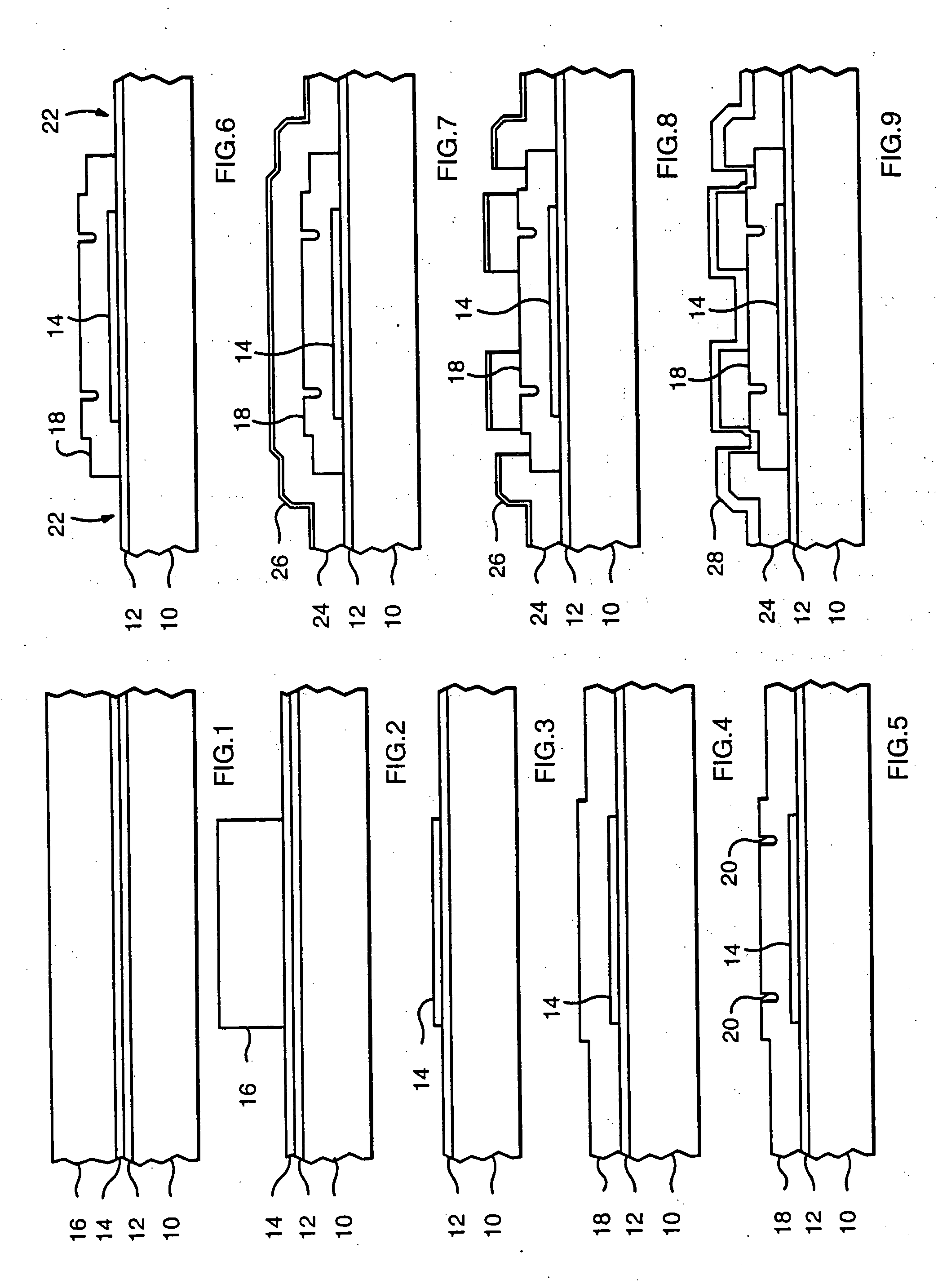Microelectrical mechanical structure (MEMS) optical modulator and optical display system
a mechanical structure and optical modulator technology, applied in the field of optical display systems, can solve the problems of reducing the brightness of the display, requiring relatively expensive optical components, and low contrast ratio, and achieve the effect of reducing the light attenuation or expense of the polarizing illumination light, and high contrast ratio
- Summary
- Abstract
- Description
- Claims
- Application Information
AI Technical Summary
Benefits of technology
Problems solved by technology
Method used
Image
Examples
Embodiment Construction
[0019] To assist with understanding the present invention, the general procedure for fabricating micromechanical devices using the MUMPs process is explained with reference to FIGS. 1-15.
[0020] The MUMPs process provides three-layers of conformal polysilicon that are etched to create a desired physical structure. The first layer, designated POLY 0, is coupled to a supporting wafer, and the second and third layers, POLY 1 and POLY 2, respectively, are mechanical layers that can be separated from underlying structure by the use of sacrificial layers that separate layers and are removed during the process.
[0021] The accompanying figures show a general process for building a micro-motor as provided by the MEMS Technology Applications Center, 3021 Cornwallis Road, Research Triangle Park, North Carolina.
[0022] The MUMPs process begins with a 100 mm n-type silicon wafer 10. The wafer surface is heavily doped with phosphorus in a standard diffusion furnace using POCI 3 as the dopant sour...
PUM
 Login to View More
Login to View More Abstract
Description
Claims
Application Information
 Login to View More
Login to View More - R&D
- Intellectual Property
- Life Sciences
- Materials
- Tech Scout
- Unparalleled Data Quality
- Higher Quality Content
- 60% Fewer Hallucinations
Browse by: Latest US Patents, China's latest patents, Technical Efficacy Thesaurus, Application Domain, Technology Topic, Popular Technical Reports.
© 2025 PatSnap. All rights reserved.Legal|Privacy policy|Modern Slavery Act Transparency Statement|Sitemap|About US| Contact US: help@patsnap.com



